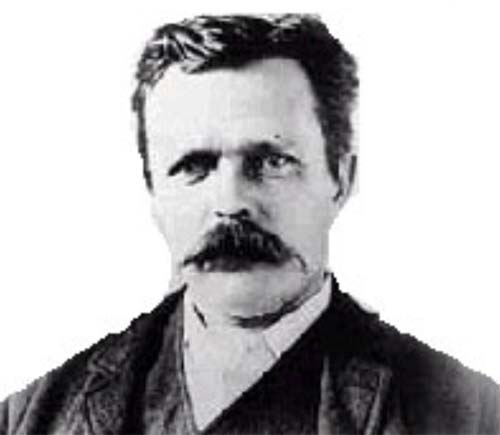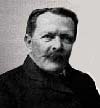
 John Milne was born in
Liverpool in 1850, but grew up in Rochdale living at 147
Drake Street and at Tunshill, Milnrow. Milne led a
remarkable life and by all accounts was a man abounding
with energy and enthusiasm. He was an avid golfer and
enjoyed music, literature and photography, but his
passion was earthquakes.  Educated at King's College and the Royal School of Mines, he worked as a mining engineer in Newfoundland and Labrador and in 1874 served as a geologist on a mining expedition to N.W. Arabia. At the age of 25 he took up the position as professor of Geology and Mining at the Imperial College of Engineering in Tokyo. He founded the Seismological Society of Japan and over the years compiled an extensive catalog of Japanese earthquakes. In collaboration with Alfred Ewing and Thomas Gray, he invented a revolutionary new seismograph that was used for many years and was known as the Milne-Shaw seismograph.  After 20 years in Japan, a fire at his home, on February 17, 1895, destroyed the house, his observatory, library and many of his instruments. Disheartened, he returned to England with his Japanese wife and his assistant Mr. Hirota. Milne's new home was Shide Hill House, near Newport on the Isle of White. With support from the Royal Society, Shide Hill House became the focal point for seismic research world-wide. Milne oversaw the establishment of a seismograph network of 20 observatories located in England, Russia, Canada, the U.S.A. and Antarctica. Shide Hill House had its own observatory and with Milne in residence became a mecca for scientists and dignitaries. Among the visitors to call were Robert Falcon Scott, as well as members of the Russian, Japanese and British Royal Families. One of the locals of Newport said of Milne, "He always spoke with a quiet Lancastrian accent which fascinated us lads, as did his nicotine-stained, bushy moustache with a gap burned in it by numerous cigarettes." John Milne died on July 31, 1913 of Bright's disease. He was 63. |
Close Window
